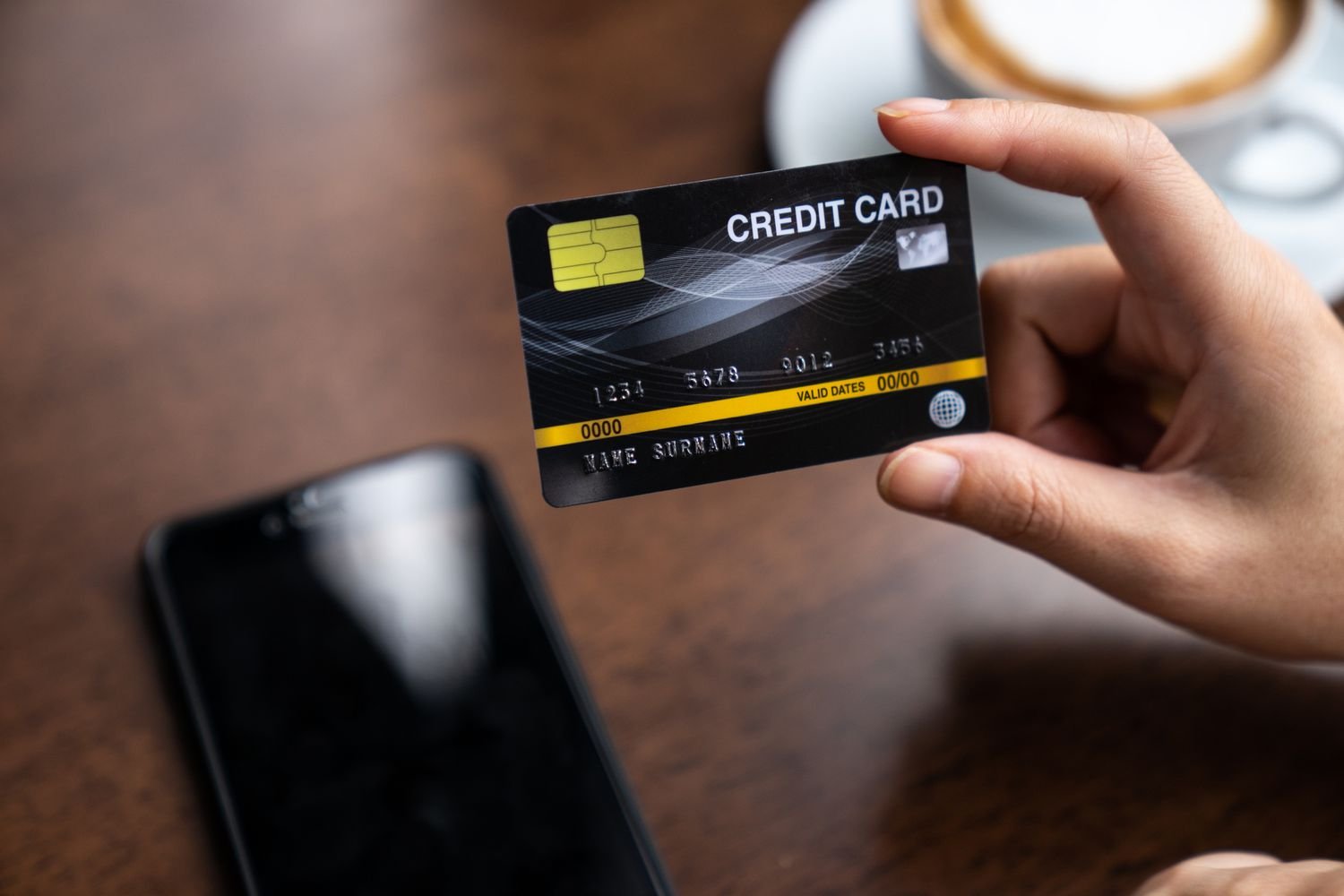-
Introduction: Credit Cards — A Tool or a Trap?
Credit cards can either be your best financial friend or your worst money nightmare. Used wisely, they offer cashback, reward points, and credit score improvement. But used carelessly? Say hello to 40% interest, late fees, and years of stress. In 2025, with rising digital payments and lifestyle inflation, learning how to control your credit card spending is no longer optional — it’s a survival skill.
This guide walks you through how to use a credit card without falling into debt, step by step, in practical detail — no boring lectures, just real talk.
-
Pay the Full Amount – Always, Not Just the Minimum
📌 The Truth About “Minimum Due”
The biggest trap in the credit card game is that sweet-looking “minimum due” on your bill. It’s not your friend — it’s a financial landmine.
When you pay just the minimum (usually 5% of the total), the remaining 95% doesn’t disappear. It stays on your card and starts accumulating interest — and not the nice kind. Credit card interest rates in India can go from 30% to 42% per annum, compounding monthly. That’s more than what loan sharks charge!
✅ What You Should Do:
Pay the full outstanding balance before the due date. Every. Single. Month.
This keeps you interest-free and builds a strong credit score.
💡 Example:
Owed: ₹10,000
Minimum Due: ₹500
Remaining ₹9,500 attracts 3% monthly interest = ₹285
Repeat this for 4–5 months and you’re looking at ₹1,500+ in interest for absolutely nothing.
-
Keep Your Credit Utilization Ratio Below 30%
📌 What Is Credit Utilization?
Credit utilization = (Total credit used ÷ Total credit limit) × 100
If your card has a ₹1,00,000 limit and you spend ₹80,000 on it, your utilization ratio is 80% — that’s a red flag to credit bureaus like CIBIL.
🧠 Why It Matters:
🔸High utilization = You look credit-hungry
🔸Low utilization = You look responsible
Keeping it under 30% shows lenders you’re in control, not desperate.
✅ What You Should Do:
Set a soft personal monthly spending cap (e.g., ₹25,000 if your limit is ₹1L), and stick to it like glue.
🔍 Pro Insight: If you need to make a big purchase (like ₹70k), try splitting it across 2 cards to keep the ratio low.
-
Use Credit Cards for Essentials, Not Emotional Buys
📌 The Impulse Problem
“Swipe now, deal with it later” = how most people fall into debt.
Using credit cards for unplanned purchases like luxury items, gadgets, or last-minute impulsive orders is a slippery slope. You may not feel the pain now, but that “emotional swipe” is tomorrow’s headache.
✅ What You Should Do:
Use your credit card like a smart debit card with perks:
🔸Groceries
🔸Fuel
🔸Utility bills
🔸Pre-planned travel or EMI purchases
💡 Hack: Always ask yourself, “Would I still buy this if I had to pay with my bank balance?”
If the answer is no — skip the swipe.
-
Avoid Cash Withdrawals on Credit Cards — No Exceptions
📌 The Hidden Killer: Cash Advances
Using your credit card to withdraw cash from an ATM might sound convenient, but it’s extremely expensive.
🔸No interest-free period
🔸Interest charges start immediately
🔸Cash advance fee = 2.5% to 3.5% of amount
🔸No reward points earned
So not only do you pay extra, but you get zero benefit in return.
✅ What You Should Do:
Never, ever use your credit card to withdraw cash. If you’re out of funds, it’s better to borrow from a friend than get slapped with ₹1,000+ in fees for withdrawing ₹10,000.
🧨 Example:
Withdraw ₹10,000 → ₹300 fee + ₹300 monthly interest → ₹600 extra instantly
-
Track Your Spending Daily (Not Just at the End of the Month)
📌 Out of Sight = Out of Budget
If you don’t check your card statement regularly, it’s easy to lose track of:
🔸Subscription auto-renewals
🔸Accidental double swipes
🔸Fraudulent transactions
🔸Interest charges building silently
✅ What You Should Do:
Use the bank’s app or third-party budgeting tools like Cred, Walnut, or Money View to stay in control. Set weekly reminders to:
🔸Review your current bill
🔸Analyze category-wise spending
🔸Check for unplanned expenses
📲 Pro Tip: Set app notifications to alert you on every swipe. Painful? Yes. Effective? Absolutely.
-
Don’t Go EMI-Happy on Every Purchase
📌 EMI = Easy Money Illusion
Many credit cards let you convert big spends into EMIs. While this helps with cash flow, it can become a trap when:
🔸You start stacking multiple EMIs
🔸You forget about processing fees
🔸You get charged interest (even on “no-cost” offers)
✅ What You Should Do:
Use EMI only for essential, planned purchases like:
🔸Laptops for work
🔸Health expenses
🔸Major home appliances
Avoid converting fashion, gadgets, or dining bills into EMIs — they lose value quickly, but your debt stays for months.
🔓 Always compare credit card EMI interest vs personal loan rates. Sometimes, a small loan is cheaper than credit card EMI.
-
Limit Yourself to 1–2 Credit Cards
📌 Too Many Cards = Chaos
Having 4–5 credit cards might feel baller, but it’s a recipe for:
🔸Missed due dates
🔸Overspending
🔸Confusion about limits, rewards, and fees
✅ What You Should Do:
Stick to 1–2 cards:
🔸One for daily use with cashback (e.g., SBI Cashback, HDFC Millennia)
🔸One for rewards/travel (e.g., HDFC Regalia, ICICI Coral)
🎯 Less is more. You’ll maximize rewards and keep debt under control.
-
Treat Your Due Date Like a Religion
📌 Late Payments Hurt
Late payment = ₹500–₹1,300 fine + 18% GST
Add to that — 3% monthly interest and your credit score taking a hit
✅ What You Should Do:
🔸Set up auto-pay for total amount due
🔸Set reminders 5–6 days before due date
🔸Pay in advance if possible — helps your limit refresh faster
🔥 Paying early gives you peace of mind and full control.
-
Don’t Use Credit Cards to Cover a Poor Budget
Using credit cards to pay for basic survival (rent, groceries, bills) every single month means one thing:
You need a budget reset, not more credit.
✅ What You Should Do:
🔸Build an emergency fund
🔸Cut back spending
🔸Shift to debit card for a few months to reset your mindset
🧠 Think of a credit card as a reward tool, not a rescue rope.
-
Already in Debt? Here’s the Escape Plan
If you’ve already swiped your way into a hole, don’t panic. You can get out:
✅ Stop using the card temporarily
✅ Convert the dues into lower interest EMIs
✅ Try a balance transfer to a new card with 0% interest for 3–6 months
✅ Take a small personal loan at 12–15% and clear off the 36% interest card
📞 Pro Tip: Call the bank and negotiate. Many offer hardship programs, one-time settlements, or lower EMIs.
-
Final Thoughts: Be the Master of the Card, Not Its Slave
Credit cards aren’t evil. They’re a tool — and like any tool, they can either build your financial future or destroy your peace of mind.
Use it with discipline, awareness, and strategy, and you’ll reap all the benefits — cashback, reward points, travel perks, and a great credit score.
Use it recklessly, and you’re signing up for stress, interest traps, and long-term regret.




